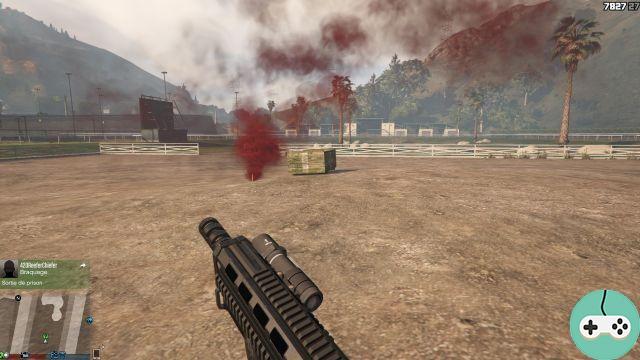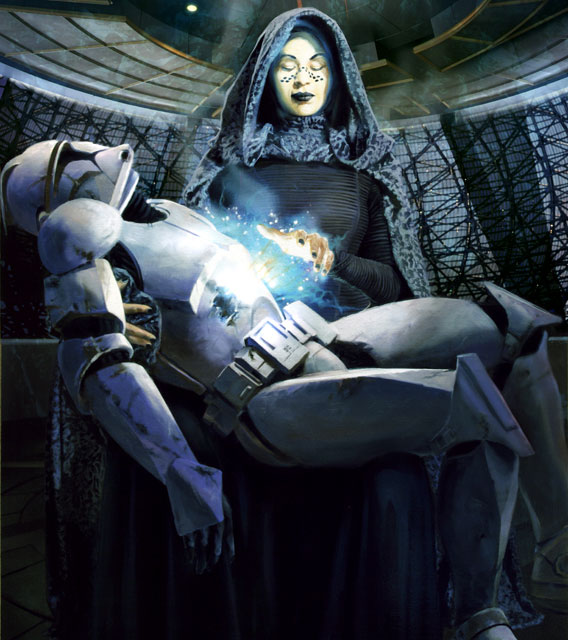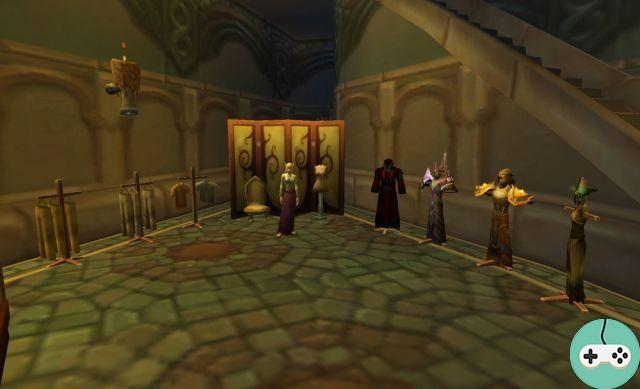

The Murray Cup is undoubtedly the jewel of the space race. Every year, the best teams dedicate all their blood, sweat and money to try to win first place in this grueling race that takes place through an entire system.
History of the race

The Murray Cup tradition dates back to the earliest colonization of the Ellis system around AD 2467. The government's decision to terraform four planets at once in this newly discovered system generated a huge influx of people and space equipment. With little else to do while waiting for their machines to start altering the temperatures of the planetary cores, the terraformers and their families set out to race their unused construction ships to kill time.
Soon makeshift racing circuits were improvised using surplus terraforming equipment, and company ships were modified to increase their speed. After a while, instead of racing when we weren't terraforming, we started to terraform so we could race. The popularity of this hobby spread beyond the system and soon non-terraformers began to come to risk participating in this grueling race.
Meanwhile, Amon Murray smelled profit. Murray was a criminal and gambler who had amassed a small fortune selling drugs and other contraband to idle terraformers. He developed a passion for improvised races, not as a participant but by playing the organizers and the bookmakers; he began to take bets on amateur races in the system. After six months Murray realized that he was making more money by arranging bets than by reselling contraband. Not being the type to settle for a small fortune when a bigger one awaited him at the turn, Murray allocated the necessary resources to the legitimization of the races and offered a small pot to the winner of what was to end in call itself, at Murray's insistence, the first Murray Cup.
The first official race crowned Ian Rikkord in 2479. Rikkord was an atmospheric specialist working for Gaia Planet Services who rose to stardom thanks to the impressive amount of modifications made to his dispatch rider RSI Nova, thus kicking off sending to a tradition spanning more than five centuries of Cup winners personally modifying production ships. The reactions to this new race were not long in coming; new entrants came from across the Empire and beyond to take part, and the top prize grew year after year. By around 2488 Murray had become "frequentable"; the ex-drug dealer had succeeded in establishing himself as a public figure and father of modern space races.
The Race
The Murray Cup is divided into two types of races: the Classic (commonly known as "the hare") and the Blitz (formerly "the Turtle", or Div-T). Classic racing is exactly what you would expect: ships trying to get ahead of each other, as fast as possible. The Blitz takes into account the weaponry of ships, which allows pilots to engage in limited combat (with increasingly severe restrictions over the years) during the race in order to neutralize without destroying the competitors. Although most drivers tend to specialize in one of two types of races, if one is to truly be successful at the Murray Cup, it is important to master the skills in both areas. Competitors train for years to improve their “left style”, and only a few exemplary drivers manage to become truly “ambidextrous”.
The intrinsic difficulty of the Murray Cup is in the circuit itself, which now stretches across the entire Ellis system and consists of several stages. Each round is designed to take advantage of natural stellar obstacles present in the system, such as asteroid belts and gravity wells and, over the past few centuries, man-made obstacles such as various agility rings as well as locks. doors to target. Certain portions of the circuit demand such a level of precision in the piloting that they have attracted disastrous nicknames such as "the sea of sorrow" or "the cemetery". However, despite the Murray Cup's attachment to its prestigious tradition, League officials continue to make changes to the circuit every year in order to maintain a very high level of difficulty, despite constant improvements made by constructors. such as RSI and Origin to their racing ships to make them ever faster and more maneuverable.
Obviously, a ship is nothing without its pilot, and with the Murray Cup live streaming across the Spectrum, the winners quickly become legends. It's hard to think of the sport without mentioning big names such as Terra McConoway, who in 2495 became the first person to ever win two Murray Cups, or Issigon Ado, who marked the start of an era of cross-species participation in becoming the first Banu to win. There are also those who write history by not just winning, but also putting it in style. Take for example Dax "The Hax" Emmelmann, who in 2731 set a new speed record thanks to the heavily modified thrusters in his Aurora. Several generations of DIY enthusiasts have since done their best to try and break this record. There is also the uplifting story of Fabis Capaldi, who won in 2798 despite suffering from Rauk syndrome, showing everyone that anything is possible.
More recently, we have witnessed the rise of champions such as the Bakshi family of drivers, who have 40 years of racing and 3 victories on their own, and it is not over yet. There are still fans begging underdog Hypatia Darring to come out of retirement, taken after his last second victory in 2934. And yet, it is tragic that the driver who still holds the most space in people's minds is the winner of 2942, the late Zack Hugh.

Changing the rules
Deaths are part of the racing world; hundreds of participants and spectators were killed in accidents during the half-millennium of Murray Cups. None of them, however, upset the galaxy and racing culture as much as the crash that marked the end of the 2942 Murray Cup. After a hard-fought race, driver Zack Hugh began the traditional lap of honor, and ended up being hit head-on by an amateur pilot to whom he had taken a turn, and who had just lost control of his aircraft. It was to this sad end that the biggest prize in space racing was awarded to a widow, and the Murray Cup Racing League retired behind closed doors to once again reorient the future of the event.
In 2943, Commissioner Marco Verender announced that the qualifying process for the race would be reviewed following the tragedy of 2942. As of this year, qualifying is now determined by a points system that extends to the entire race. the season. The drivers who would like to qualify for the grand final must accumulate twenty "points" by obtaining good classifications in the other authorized races of the Cup, with three points for the first place, two for the second and only one for the third. This change, as well as an adjustment of the rules concerning the weaponry of the Blitz, has been severely criticized by some observers who believe that it is a departure from tradition in the name of order and security. . The overall impact on the race will soon be known: the end of this season is approaching and a number of remarkable drivers who have already obtained the necessary twenty points are being followed closely by the media.


























